TLDR
A sewer line needs a minimum slope of 1/4 inch per foot for pipes 2 to 3 inches in diameter, and 1/8 inch per foot for pipes 4 inches or larger. This slope ensures wastewater flows steadily without leaving solids behind or causing clogs.
Understanding Sewer Line Slope
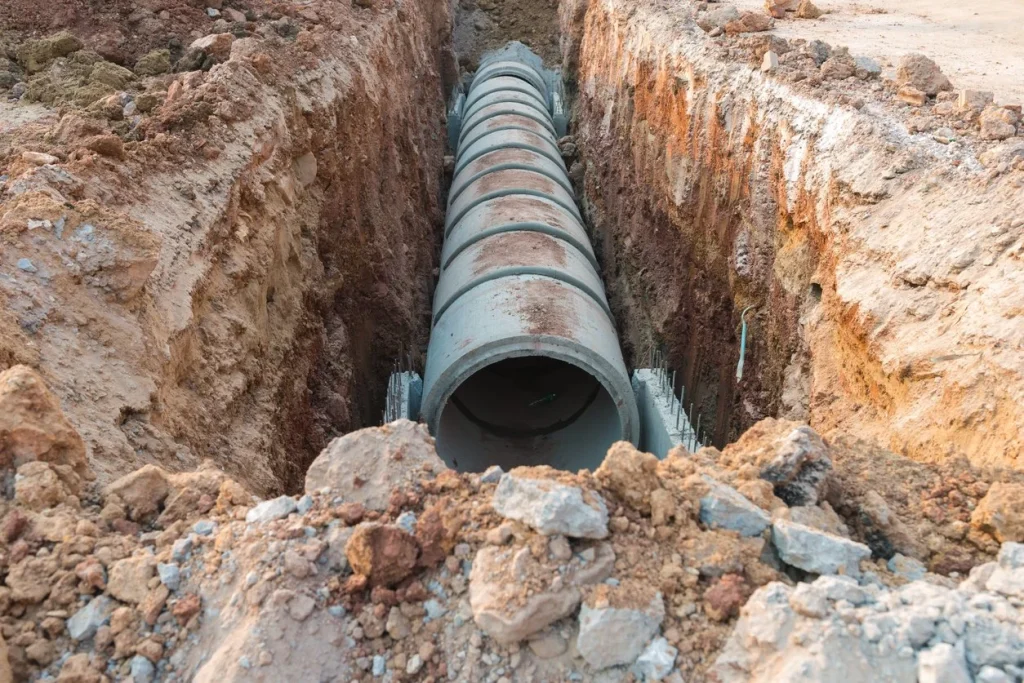
The fall, or slope, of a sewer line is the amount a pipe drops over a given distance.
Without proper slope, wastewater will not drain correctly.
- Too little slope leads to standing water and blockages.
- Too much slope causes water to outrun solids, leaving waste behind.
Sewer Solutions explains slope as the balance point for gravity drainage. The pipe gradient controls how well water and solids travel together.
Plumbing Code Requirements for Sewer Line Fall
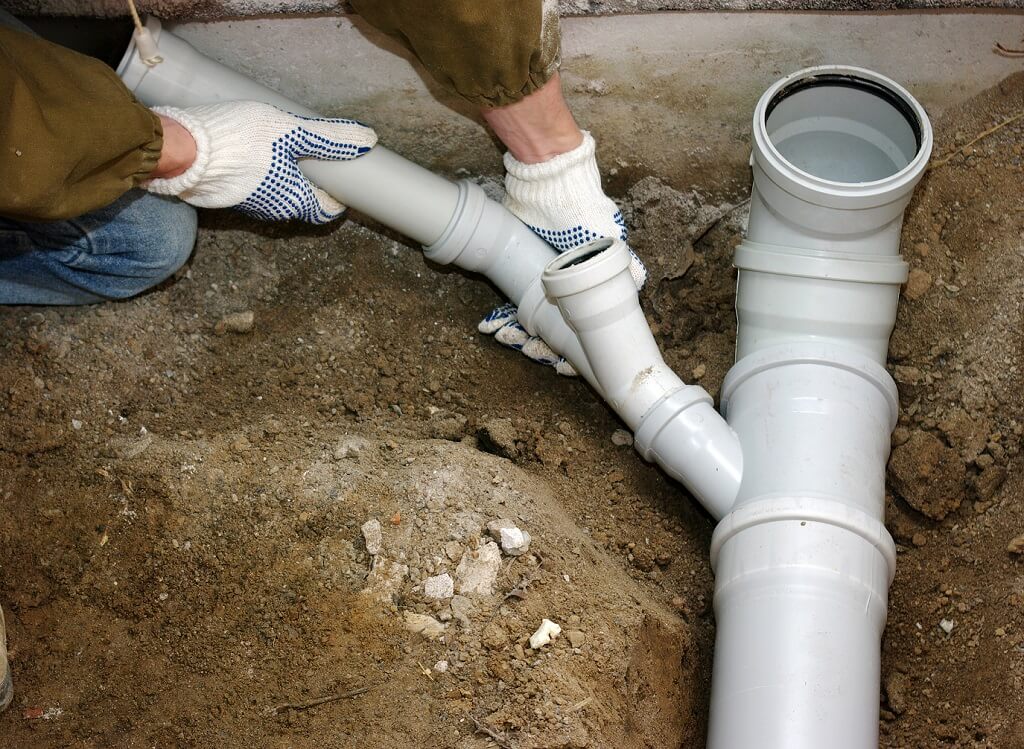
Building codes set the minimum slope for sewer lines. These standards prevent common drainage failures.
- For 2 to 3 inch pipes: 1/4 inch per foot minimum
- For 4 inch pipes or larger: 1/8 inch per foot minimum
- International Plumbing Code (IPC) accepts these standards
- Louisiana state and parish codes follow the same rules but inspectors may apply stricter checks
Sewer Solutions always recommends checking local code before installation.
Sewer Line Slope by Pipe Size

Here is a quick reference for slope per pipe size:
- 2 inch pipe: 1/4 inch per foot
- 3 inch pipe: 1/4 inch per foot
- 4 inch pipe: 1/8 to 1/4 inch per foot
- Larger pipes: slope may be reduced, but never below 1/8 inch per foot
Consistency in slope is as important as the measurement itself.
How to Calculate Sewer Line Slope

Slope is calculated with rise over run.
Formula: Slope = Vertical drop ÷ Horizontal run
Example:
- A 50 foot run of 4 inch pipe at 1/8 inch per foot = 6.25 inches total fall
- A 50 foot run of 3 inch pipe at 1/4 inch per foot = 12.5 inches total fall
Tools used by professionals include:
- Laser levels
- String lines with line levels
- Digital slope calculators
Sewer Solutions uses laser technology for precision on long trench runs.
Common Mistakes in Sewer Line Slope Installation
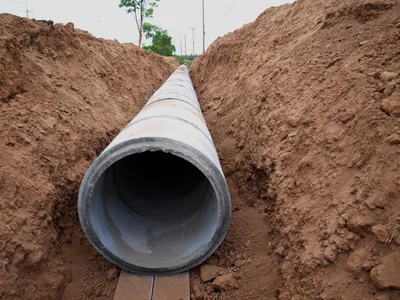
Improper slope is one of the top causes of sewer failures.
Mistakes include:
- Too much slope, causing water to leave solids behind
- Too little slope, leading to clogs and backups
- Uneven trenching, creating high and low spots where water collects
- Wrong pipe diameter used for the slope allowed
Even small errors in excavation depth can cause costly long-term problems.
Signs Your Sewer Line Has the Wrong Slope
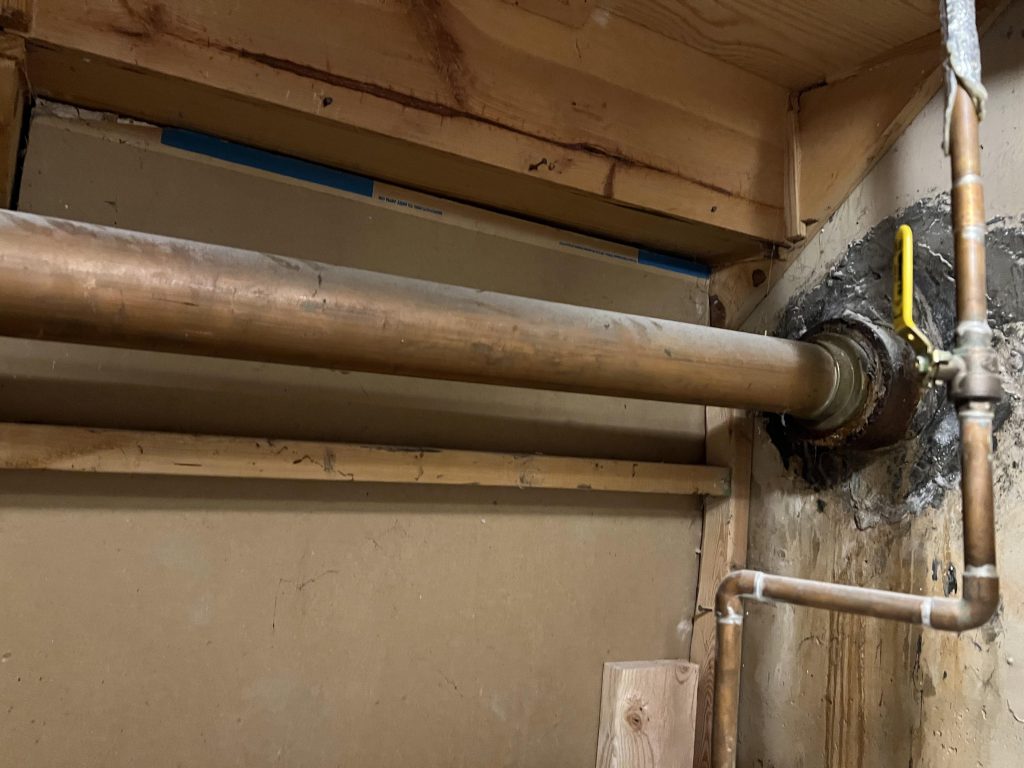
Slope issues often reveal themselves through household plumbing symptoms.
Look for:
- Recurring clogs in multiple drains
- Gurgling sounds when flushing toilets or draining sinks
- Slow drains that worsen over time
- Standing water in cleanout access
- Septic tanks that overflow more often than expected
If these signs appear, an inspection is needed. Sewer Solutions performs camera inspections to confirm slope issues.
Best Practices for Installing Sewer Lines with Proper Fall
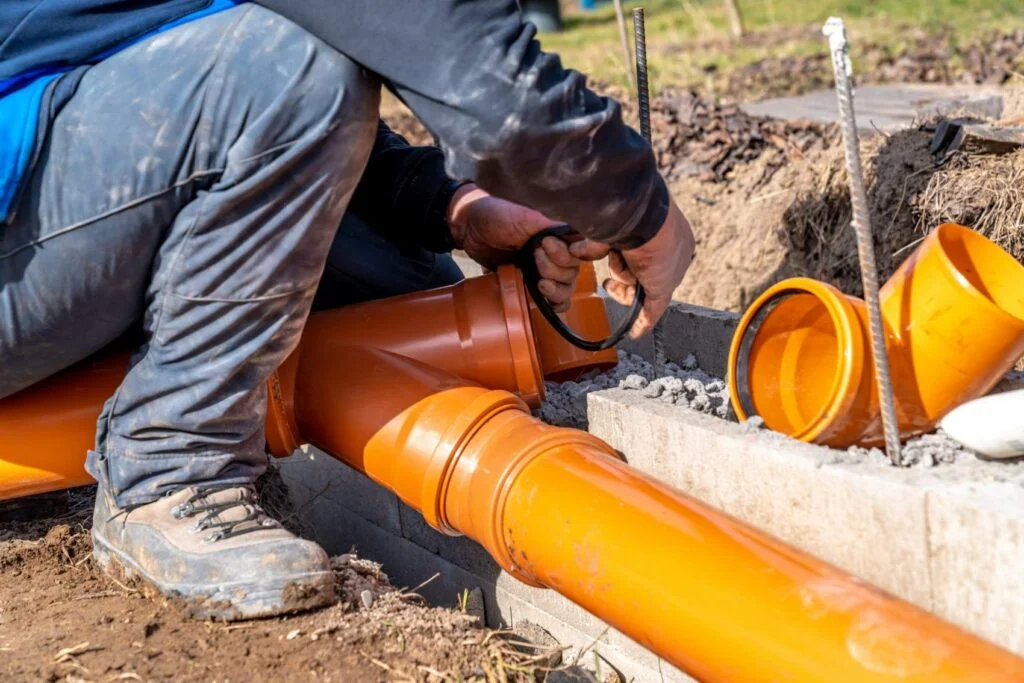
Professional installation reduces slope problems.
Key practices include:
- Digging trenches at the correct depth and gradient
- Using proper bedding material such as compacted sand or gravel
- Checking slope with levels before backfilling
- Avoiding sharp bends that restrict flow
- Inspecting work with cameras or laser slope tools before covering
Following these practices ensures long-term reliability of the wastewater system.
Sewer Line Installation Slope and Local Conditions in Louisiana
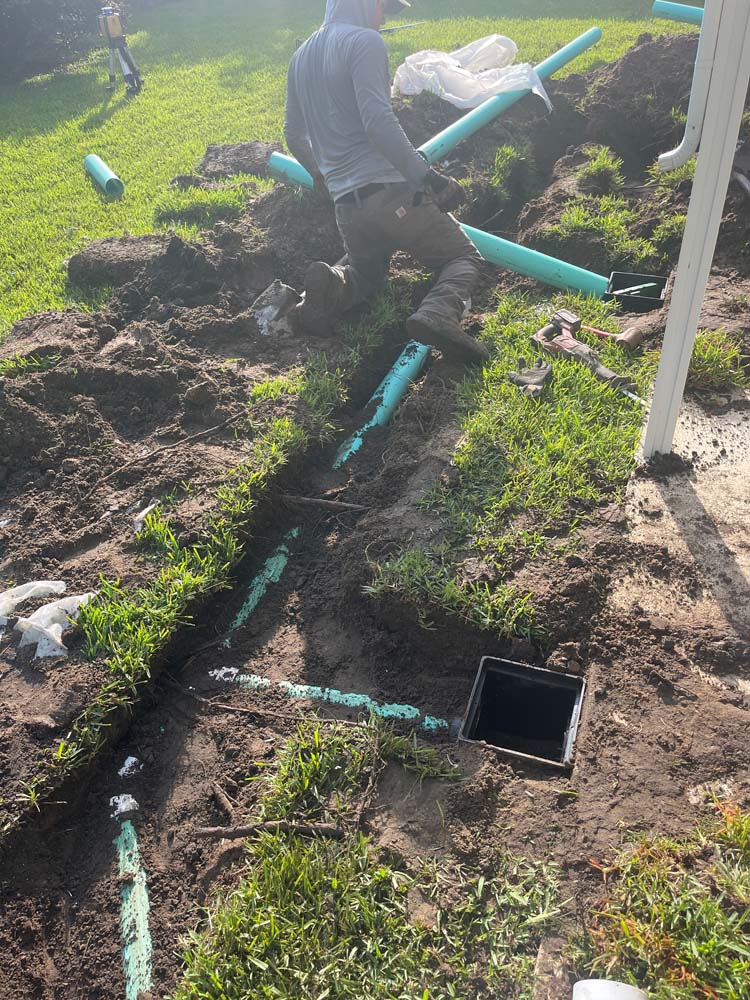
Soil conditions in Louisiana present unique challenges.
- Clay soils may hold moisture and shift, causing slope to change
- Sandy soils may collapse into trenches, changing fall during installation
- High water tables require extra care to stabilize pipe bedding
Local parishes often require permits and inspections. Homeowners should always confirm whether a permit for sewer line replacement is needed before starting work, since plumbing codes vary by parish. Sewer Solutions understands regional plumbing inspector expectations and plans trench depth accordingly.
Professional vs DIY Sewer Line Installation

Small projects such as short sewer repairs might be within reach of a skilled homeowner.
But most installations benefit from professional help.
DIY installation is risky because:
- Incorrect slope is hard to correct after backfilling
- Codes and permits are strict and require approval
- Long-term repair costs are higher if mistakes are made
Hiring Sewer Solutions ensures the line is installed to code, inspected, and guaranteed.
Sewer Line Maintenance and Long-Term Care
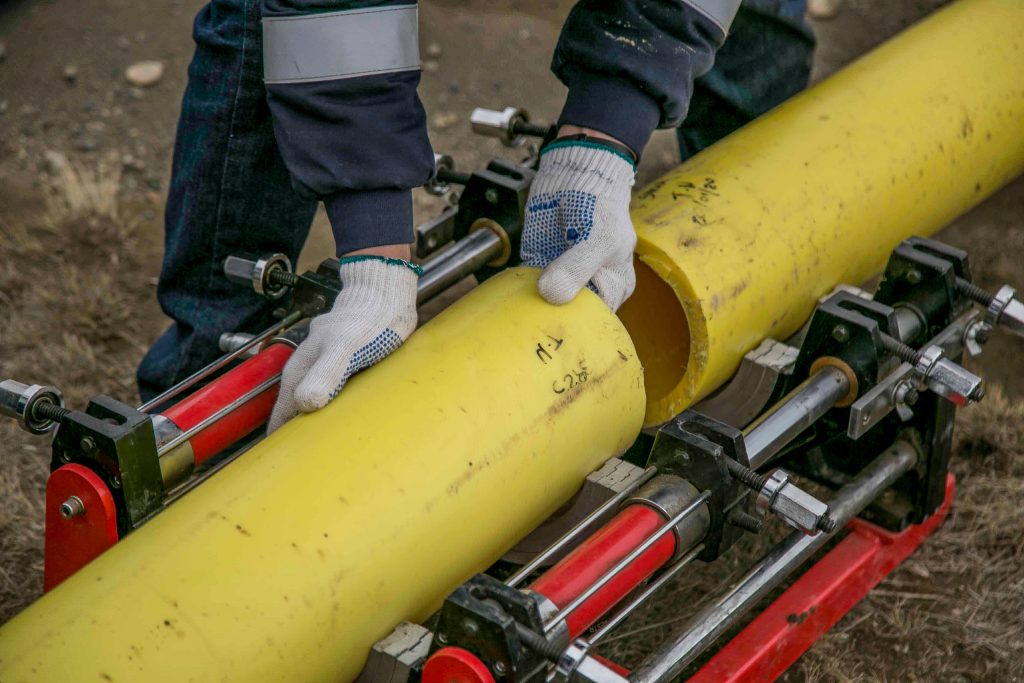
Even properly sloped sewer lines need maintenance.
Maintenance tips:
- Schedule inspections every few years
- Use hydro-jetting or professional cleaning to remove buildup
- Avoid flushing wipes, grease, or debris that add stress to slope performance
- Have a camera inspection performed if backups become frequent
Regular care extends the life of your sewer line and prevents costly repairs.
Frequently Asked Questions on Sewer Line Slope
What is the minimum slope per foot for sewer lines?
1/4 inch per foot for pipes up to 3 inches. 1/8 inch per foot for pipes 4 inches or larger.
Can a sewer line be too steep?
Yes. Excessive slope causes water to outrun solids, leading to clogs.
How do I check my sewer line slope?
Use a level or call a professional plumber with a camera or laser level.
How often should sewer lines be inspected?
Yes. Most use IPC standards, but local inspectors may set additional requirements.
Sewer Solutions Expert Advice
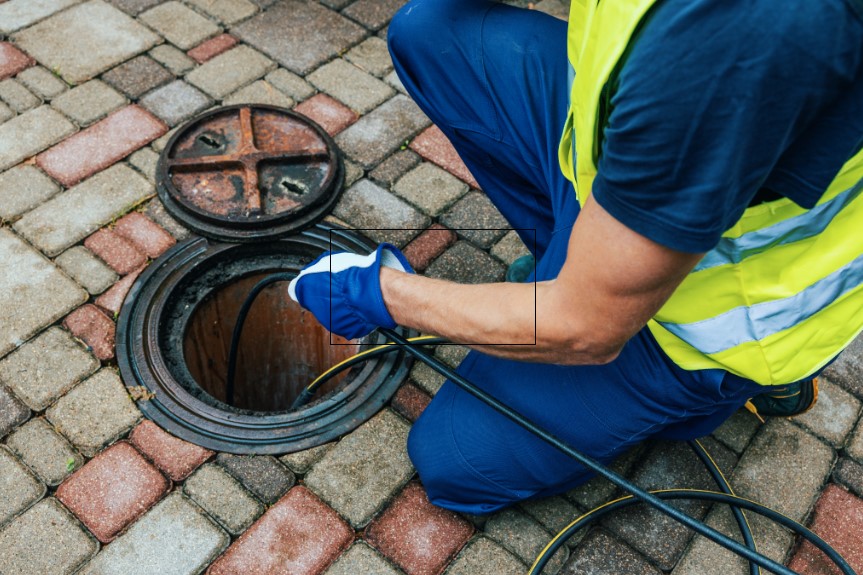
The correct fall for a sewer line is not optional. It is the foundation of a working drainage system.
A minimum of 1/4 inch per foot for small pipes and 1/8 inch per foot for larger ones ensures smooth flow.
Consistent slope is key to avoiding costly repairs.
Sewer Solutions recommends:
- Checking slope before covering pipe
- Following local code requirements
- Using professional tools for accuracy
- Calling an expert when unsure
With proper slope, your sewer line works efficiently for decades